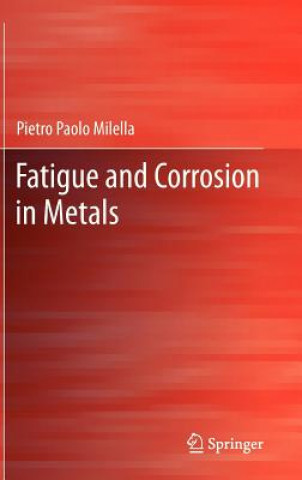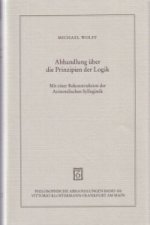
Doručení
Nákupní rádce





Nehodí se? Vůbec nevadí! U nás můžete do 30 dní vrátit
 Dárkový poukaz
V libovolné hodnotě
Dárkový poukaz
V libovolné hodnotě
S dárkovým poukazem nešlápnete vedle. Obdarovaný si za dárkový poukaz může vybrat cokoliv z naší nabídky.
Fatigue and Corrosion in Metals
 Angličtina
Angličtina
 393 b
393 b
30 dní na vrácení zboží
Mohlo by vás také zajímat


This textbook, suitable for students, researchers and engineers, gathers the experience of more than 20 years of teaching fracture mechanics, fatigue and corrosion to professional engineers and running experimental tests and verifications to solve practical problems in engineering applications. As such, it is a comprehensive blend of fundamental knowledge and technical tools to address the issues of fatigue and corrosion. The book initiates with a systematic description of fatigue from a phenomenological point of view, since the early signs of submicroscopic damage in few surface grains and continues describing, step by step, how these precursors develop to become mechanically small cracks and, eventually, macrocracks whose growth is governed by fracture mechanics. But fracture mechanics is also introduced to analyze stress corrosion and corrosion assisted fatigue in a rather advanced fashion. The author dedicates a particular attention to corrosion starting with an electrochemical treatment that mechanical engineers with a rather limited knowledge of electrochemistry will well digest without any pain. The electrochemical introduction is considered an essential requirement to the full understanding of corrosion that is essentially an electrochemical process. All stress corrosion aspects are treated, from the generalized film rupture-anodic dissolution process that is the base of any corrosion mechanism to the aggression occurring in either mechanically or thermally sensitized alloys up to the universe of hydrogen embrittlement, which is described in all its possible modes of appearance. Multiaxial fatigue and out-of-phase loading conditions are treated in a rather comprehensive manner together with damage progression and accumulation that are not linear processes. Load spectra are analyzed also in the frequency domain using the Fourier transform in a rather elegant fashion full of applications that are generally not considered at all in fatigue textbooks, yet they deserve a special place and attention. The issue of fatigue cannot be treated without a probabilistic approach unless the designer accepts the shame of one-out-of-two pieces failure. The reader is fully introduced to the most promising and advanced analytical tools that do not require a normal or lognormal distribution of the experimental data, which is the most common case in fatigue. But the probabilistic approach is also used to introduce the fundamental issue of process volume that is the base of any engineering application of fatigue, from the probability of failure to the notch effect, from the metallurgical variability and size effect to the load type effect. Fractography plays a fundamental role in the post mortem analysis of fatigue and corrosion failures since it can unveil the mystery encrypted in any failure.This textbook, suitable for students, researchers and engineers, gathers the experience of more than 20 years of teaching fracture mechanics, fatigue and corrosion to professional engineers and running experimental tests and verifications to solve practical problems in engineering applications. As such, it is a comprehensive blend of fundamental knowledge and technical tools to address the issues of fatigue and corrosion. The book initiates with a systematic description of fatigue from a phenomenological point of view, since the early signs of submicroscopic damage in few surface grains and continues describing, step by step, how these precursors develop to become mechanically small cracks and, eventually, macrocracks whose growth is governed by fracture mechanics. But fracture mechanics is also introduced to analyze stress corrosion and corrosion assisted fatigue in a rather advanced fashion. The author dedicates a particular attention to corrosion starting with an electrochemical treatment that mechanical engineers with a rather limited knowledge of electrochemistry will well digest without any pain. The electrochemical introduction is considered an essential requirement to the full understanding of corrosion that is essentially an electrochemical process. All stress corrosion aspects are treated, from the generalized film rupture-anodic dissolution process that is the base of any corrosion mechanism to the aggression occurring in either mechanically or thermally sensitized alloys up to the universe of hydrogen embrittlement, which is described in all its possible modes of appearance. Multiaxial fatigue and out-of-phase loading conditions are treated in a rather comprehensive manner together with damage progression and accumulation that are not linear processes. Load spectra are analyzed also in the frequency domain using the Fourier transform in a rather elegant fashion full of applications that are generally not considered at all in fatigue textbooks, yet they deserve a special place and attention. The issue of fatigue cannot be treated without a probabilistic approach unless the designer accepts the shame of one-out-of-two pieces failure. The reader is fully introduced to the most promising and advanced analytical tools that do not require a normal or lognormal distribution of the experimental data, which is the most common case in fatigue. But the probabilistic approach is also used to introduce the fundamental issue of process volume that is the base of any engineering application of fatigue, from the probability of failure to the notch effect, from the metallurgical variability and size effect to the load type effect. Fractography plays a fundamental role in the post mortem analysis of fatigue and corrosion failures since it can unveil the mystery encrypted in any failure.
Informace o knize
 Angličtina
Angličtina




 Jak nakupovat
Jak nakupovat






























